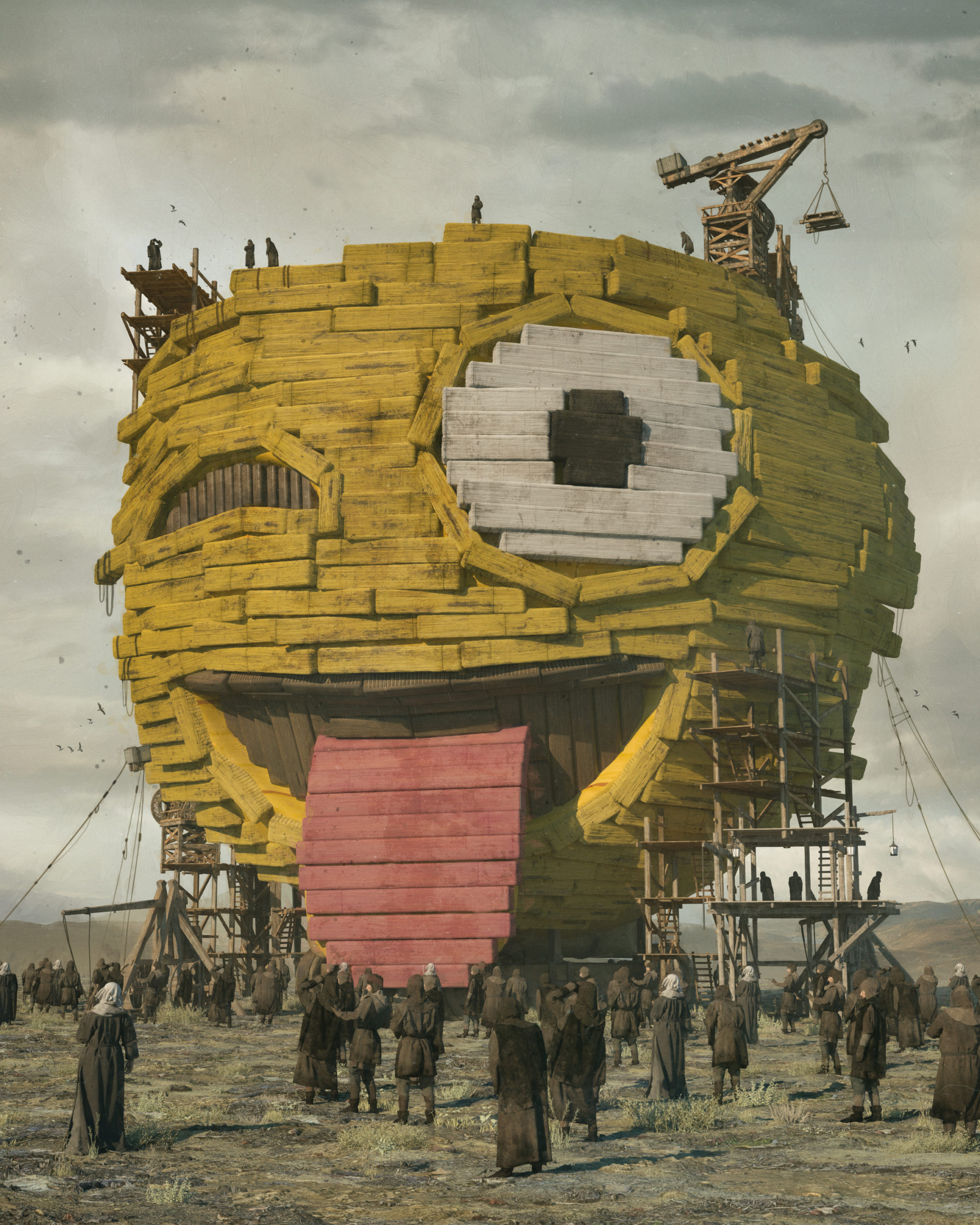Today one of the most prestigious institutions in the art world, the 250-year-old auction house Christie’s, is selling a collection of Instagram posts. Or in its own more reserved language, Christie’s is now “the first major auction house to offer a purely digital work.”
The work in question is “Everydays: The First 5000 Days” by the South Carolina-based animation artist Beeple (real name Mike Winkelmann), an assemblage of images he has posted online over the last thirteen-odd years. Whoever acquires “Everydays” won’t get a unique product — the image is a digital file which can be copied like any other. They’ll just be paying for a proof of ownership secured through the blockchain.
But more significant than the work’s format is its artistic content. Beeple is opening the way for the traditional art world to embrace internet memes. Having already been commissioned by an array of fashionable brands and celebrities, Beeple has the cultural capital to be treated seriously by Christie’s. But his reputation rests on the viral appeal of his pictures, which have brought him 1.8 million Instagram followers. And his work is very much in the spirit of great memes: weird, witty and irreverent takes on politics and pop culture.
One of Beeple’s images shows a gargantuan, naked Donald Trump straddling the Washington Capitol building, giving a thumbs-up as his supporters clash with the police below. Another portrays Jeff Bezos as a giant octopus emerging from the ocean. Beeple himself admits that he has become almost ‘a political cartoonist’.

It’s no mystery why an institution like Christie’s would want to make this transition.
Cash has surged into digital art over the past year, facilitated by a blockchain technology called non-fungible tokens (NFTs). After taking payment in cryptocurrency, an online marketplace such as MakersPlace mints an NFT for a particular artwork, providing a permanent record of authenticity. This allows unique ownership of a work to be bought and sold even if the file itself can still be copied.
Funnily enough, these “crypto collectibles” were developed to answer the demand for rare Pepe the Frog memes. Last week another famous meme, Nyan Cat, was sold for half-a-million dollars. Meanwhile, in December, an auction of Beeple’s work grossed $3.5 million in three days. At that point Christie’s was interested.
The attempt to dress this up in the language of high art, with a Christie’s specialist comparing Beeple’s work to “a Duchampian readymade,” doesn’t quite conceal the jarring implications of the auction. If the demand and the means of securing property rights are there, why shouldn’t Christie’s auction rare Pepes, or maybe an especially funny version of the “distracted boyfriend” meme? It’s really just a question of taste, which will change with time. Yes, Beeple is an original and technically skilled artist. But ultimately, Christie’s is now in the business of selling high-status memes.
Maybe there will be a happy compromise here. You get to enjoy Beeple’s Instagram just as you used to, while a wealthy collector gets the kudos of owning the content. And the artist, at last, has a way to earn money from JPEGs and MP4s. But scarcity has a way of reasserting itself, especially when owning unique works brings social prestige. How long until collectors find a way to restrict access to their prize memes?











Join the discussion
Join like minded readers that support our journalism by becoming a paid subscriber
To join the discussion in the comments, become a paid subscriber.
Join like minded readers that support our journalism, read unlimited articles and enjoy other subscriber-only benefits.
Subscribe